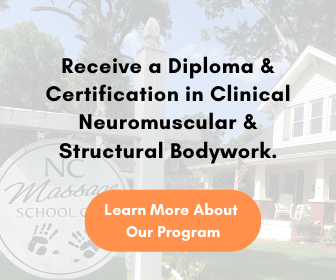Enhancing Wellness
Various techniques have been developed in massage therapy to address specific physical ailments and improve overall well-being. Neuromuscular Massage Therapy (NMT) and Structural Massage stand out for their effectiveness in treating chronic pain, correcting muscle imbalances, and improving body alignment. While both therapies have unique approaches, they share a common goal: helping individuals achieve a pain-free and balanced life.
What is Neuromuscular Massage Therapy?
Neuromuscular Massage Therapy (NMT) is a specialized deep-tissue technique that focuses on alleviating chronic pain, correcting muscle imbalances, and addressing the root causes of musculoskeletal dysfunction. Its primary goal is to release myofascial trigger points, which are hyper-irritable spots in the muscle that cause pain and discomfort.
The Science Behind Neuromuscular Therapy
NMT operates by targeting these trigger points, which often arise from:
- Poor circulation
- Lack of oxygen in the muscles
- Accumulation of metabolic waste in muscle tissue

Common Conditions Treated by NMT
NMT is highly effective in treating a variety of conditions, including sciatica, carpal tunnel syndrome, chronic back pain, nerve entrapments, and more. It is particularly beneficial for individuals who suffer from chronic pain due to postural imbalances, repetitive stress injuries, or nerve compression.
Differences Between NMT and Deep Tissue Massage
While NMT and deep tissue massage both involve working on the deeper layers of muscle tissue, their focus and techniques differ. Deep tissue massage generally aims to relieve tension and improve circulation throughout the body, whereas NMT specifically targets trigger points and the underlying causes of muscle dysfunction. NMT also involves a more detailed assessment and consultation process, ensuring the treatment is tailored to the individual’s needs.
What is Structural Massage?
Structural Massage is a non-invasive technique designed to address pain and dysfunction by correcting structural imbalances in the body. Unlike traditional massage therapies that rely on pressure and rubbing, Structural Massage uses specific body positioning to realign the body and reduce pain.

Principles of Structural Massage
Structural Massage offers numerous benefits, including improved posture, increased range of motion, enhanced flexibility, and pain relief. By correcting structural imbalances, this therapy helps to alleviate chronic pain, prevent future injuries, and improve overall body function.
Structural Massage is grounded in the following principles:
- Identifying and Correcting Structural Imbalances: The therapist identifies tender spots and gently shifts the body into positions that ease discomfort. These positions are held for 1-2 minutes, allowing the body to adjust and reduce tension.
- Utilizing the Body’s Natural Realignment: Instead of applying force, Structural Massage encourages the body to realign itself naturally, leading to long-term relief.
Who Should Consider Structural Massage?
Structural Massage is an excellent option for individuals with chronic back pain, postural imbalances, or other musculoskeletal issues. It is particularly beneficial for those who prefer a less invasive approach to pain relief, as it does not involve the discomfort that sometimes accompanies deep tissue massage or other pressure-based techniques.
The Role of Fascia in Both Therapies
Fascia is the connective tissue that surrounds and permeates every body’s muscle, organ, and fiber. It plays a crucial role in maintaining muscle structure and function. Both NMT and Structural Massage focus on releasing adhesions in the fascia to restore proper muscle function and relieve pain.

How NMT and Structural Massage Address Fascia
In NMT, the therapist works to release fascial adhesions that contribute to trigger points and muscle dysfunction. Structural Massage, on the other hand, uses body positioning to gently stretch and realign the fascia, helping to correct structural imbalances and improve overall body alignment. Both therapies help restore balance, improve movement, and reduce pain by addressing the fascia.
Integrating Neuromuscular and Structural Massage
Integrating neuromuscular and structural massage can create a comprehensive treatment plan that addresses both muscular and structural pain and dysfunction. Together, these therapies can provide:
- Comprehensive pain relief by targeting both trigger points and structural misalignments
- Improved overall body alignment and enhanced movement efficiency
- Longer-lasting results through a holistic approach to treatment
Choosing the Right Therapy for You
When deciding between Neuromuscular and Structural Massage, it’s important to consider your specific needs and health conditions. NMT may be more appropriate for individuals with chronic pain and muscle imbalances, while Structural Massage may be better suited for those with postural issues and structural imbalances.
Working with a qualified massage therapist is crucial to developing a personalized treatment plan that addresses your unique needs. A thorough consultation and assessment can help determine the best course of action, whether that involves Neuromuscular Therapy, Structural Massage, or a combination of both.
Need More Help?
Neuromuscular Massage Therapy and Structural Massage are powerful tools for managing chronic pain, correcting structural imbalances, and improving overall well-being. By understanding the unique benefits of each therapy, you can make informed decisions about your treatment options and work towards a pain-free, balanced life.
If you’re passionate about helping others achieve this same level of wellness, consider becoming a massage therapist or enhancing your skills through continuing education courses. At NC Massage School, we offer training programs that equip you with the knowledge and techniques to make a real difference in people’s lives. Whether you’re interested in starting a rewarding career in massage therapy or advancing your expertise, our programs are designed to help you succeed.
Take the next step toward a fulfilling career and explore our massage therapy programs or continuing education courses today!


